Philip Greenwood Sensei is the chief instructor and co-founder of Greenwood Aikido in Temecula, California as well as the president of the Nishikaze Aikido Society of America, a 501(c)(3) non-profit public charity and educational organization dedicated to spreading the work of notable aikido and iaido innovator and O-Sensei student Nishio Shoji (1927-2005), who was Greenwood’s instructor for many years. Greenwood Sensei has practiced aikido for 40 years and holds a 6th dan rank in the art in addition to a 5th dan rank in iaido and experience in Okinawan Kempo karate, judo, and jiu-jitsu. He started his aikido training at the Pasedena Aikikai, where he then taught as a primary instructor in the 1980s. For more information about Nishio Sensei’s life and work, please see Part 1 of this interview series. The original transcript of this interview has been edited for clarity and brevity.
Aikido Journal (Josh Gold): Can we spend a few minutes exploring the technical side of Nishio aikido? One thing I found interesting is that in Nishio aikido you usually start from a natural stance, not hanmi posture, right?
Philip Greenwood: Right. The idea of kamae or taking a stance, right on the face of it, is sort of an oppositional position. If you take a stance against a person or you put your hands up, you’ve already become part of the fight. You’ve already defined a situation as being based upon conflict and you’re already expressing that you’re not willing to accept the other person.
Right from the very beginning when you face a person, you have to face them in a way that shows you’re open to what it is that they have to say. Now, you’re not going to be open to their attack or their strike, but you have to acknowledge the other person right from the beginning. It’s really kind of interesting.
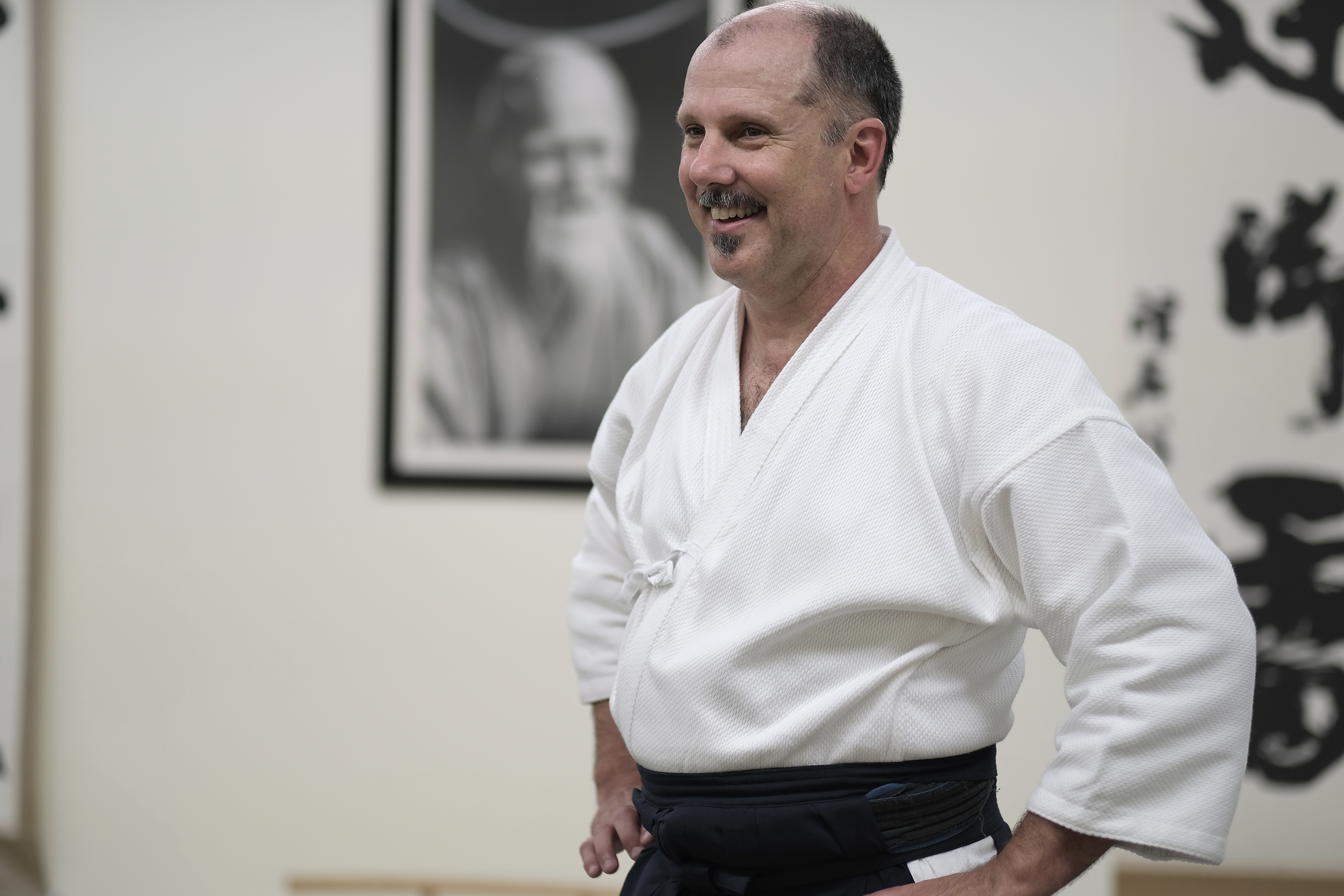
Sometimes I think about it from a perspective of why people get in fights. I was talking to a guy a while back who was a karate instructor from a rough part of England, and he would always get in a lot of fights as a young guy. He came home one day and his mom said, “Why are you getting into these fights?” He’d say, “Ah, the other guy was looking at me.” His mom said, “Well, you must have been looking too.”
When you face off with another person, you’re creating part of that interaction. In many cases when people get attacked in social violence situations, you get attacked because you’re being a jerk. If you’re a decent human being, you can avoid a lot of that. Now when you’re dealing with asocial/predatory violence, or violence exploiting large differences in power, that’s a different situation.
If your goal is to prevent conflict, you need to be aware of yourself and the messages you’re sending in any given situation. Do you remember the story about Nishio Sensei and Tohei Koichi Sensei’s jacket?
Yes. Could you tell it once again?
Tohei came into the dojo one night complaining that somebody stole this beautiful leather jacket that he’d bought while he was in Hawaii. This was a time when you couldn’t even get things like leather shoes in Japan. It was a very, very tough time economically.
“Right from the very beginning when you face a person, you have to face them in a way that shows you’re open to what it is that they have to say. Now, you’re not going to be open to their attack or their strike, but you have to acknowledge the other person right from the beginning.”
O-Sensei came into the dojo a little while later and said, “What’s wrong with Tohei?” Somebody said, “Somebody stole his jacket.” O-Sensei said to Tohei, “Well, it’s your fault that somebody stole your jacket.” What did that mean?
Nishio Sensei said he followed O-Sensei afterward to ask him what he meant. O-Sensei says, “Well, when you have nice things and you show them off and flaunt them to other people, you’re tempting people and you’re making that person into a criminal. You have to take responsibility as a martial artist to not do that to people.” O-Sensei’s way of viewing this situation gave Nishio Sensei a great insight into the real nature of aikido.
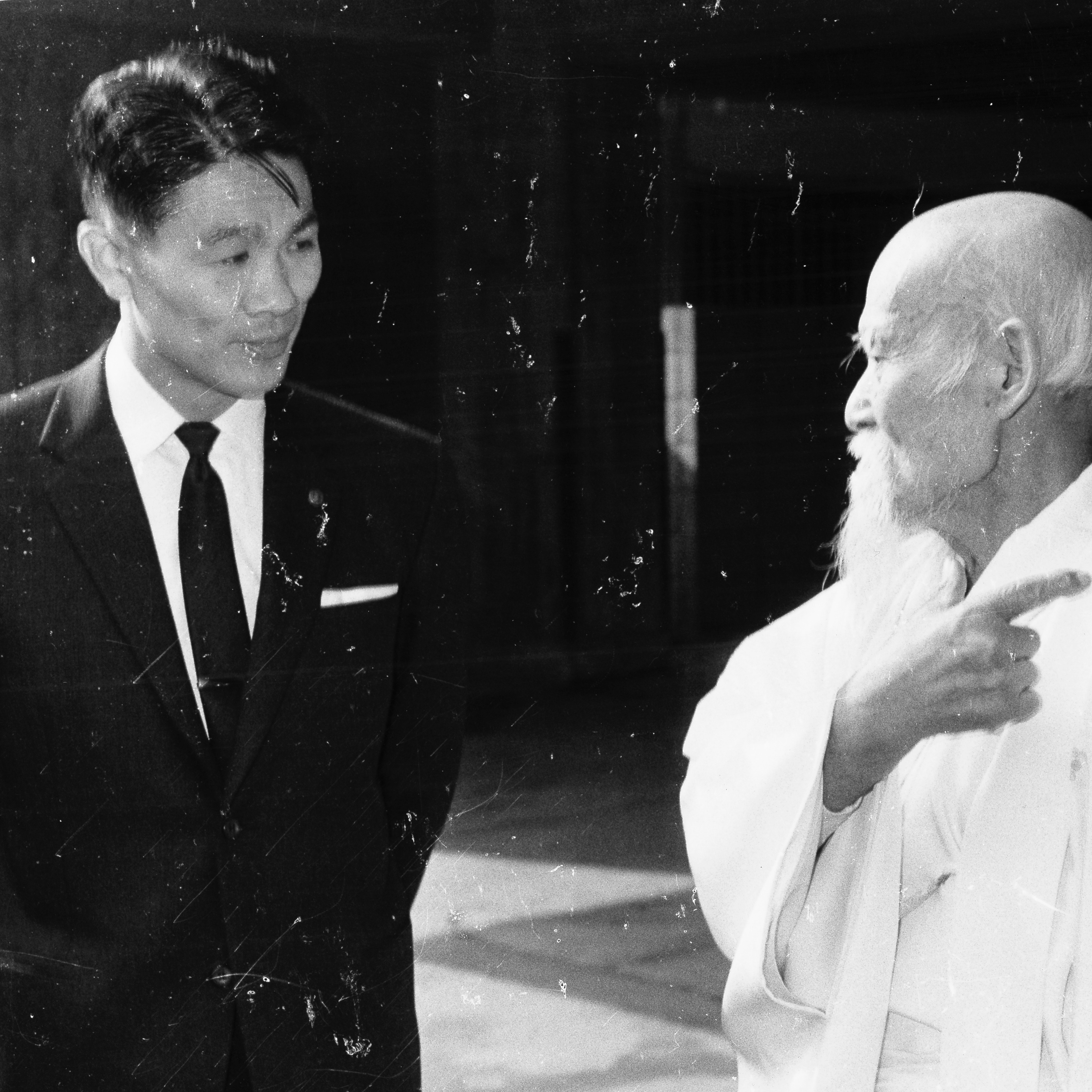
It’s not just your job as a martial artist to defend against wrongdoing, it’s your duty to not create a situation that would invite it. So if you flaunt something that somebody else wants you’ve contributed to their desire to steal. That’s the way Nishio Sensei and O-Sensei looked at it. We should think in a bigger way. You must do your part to prevent the opponent from doing wrong. Nishio Sensei would sometimes say, “If the opponent hits you in the face it’s your own fault. You’re a martial artist and you shouldn’t let that happen. You shouldn’t allow another person to commit a criminal act.”
When we talk about standing in shizentai [natural stance] in Nishio aikido, it’s about acknowledging the other person. Quite often in society, physical, verbal or legal battles happen not because people made a mistake, but because they were disrespectful. You’ll solve a lot of problems just by showing basic respect to other people. As I mentioned before, this doesn’t apply to all kinds of violence. We’re not talking about predatory violence like rape, domestic violence, etc. right now. Aikido is a study of how to correct ourselves and our own conduct.
So the idea is that natural stance is a way to face an opponent, adversary, or training partner as a kind of a physical manifestation of this concept?
Yes, exactly.
There is of course kamae or hanmi posture that’s used if you’re executing a throw or something like that because you need a stable base, but the initiating position is just one of a natural stance, right?
Exactly. From a practical standpoint, it means you’re always ready. You don’t have to assume some sort of special position or state of mind. If you train in a natural way so that you’re just standing there and just meet the person as you are in an encounter, then you’re training yourself so that you’re always ready no matter where you’re at.
Although your stance might look at ease, you’re ready inside your mind. The kamae — the posture — happens inside your mind. With your body, you just stand like you could either defend yourself at that point or you could shake hands with them; it could go either way.
Another Nishio aikido concept that I find fascinating is your concept of irimi, because it’s a little bit different than the standard way of thinking about irimi.
I’ve trained with a lot of different shihan and I’ve never had anyone explain irimi to me the way that Nishio-sensei taught it. When I learned it from him, it changed everything. It was just that one understanding that really revolutionized the way I move.
Prior to studying with Nishio Sensei, irimi just meant going in. It’s a verb, iri, which means “to enter.” You basically go at the person, or in some schools it means entering at the front as opposed to the back.
With Nishio Sensei, you don’t go directly at the person. You move sideways. If you imagine standing in the street and a car is coming at you, you have several choices. Maybe I could run away from the car, or I could run at some other angle toward the side of the street, or I could go straight sideways, which would be the fastest path out of danger.
Essentially, Nishio-style irimi is a movement in which you move directly to the side and you’re creating about a 30-degree angle toward the opponent’s center. It’s a little difficult to describe the geometry of this approach and why it works.
“If I’m carrying something around and somebody else wants it, well maybe they need it more than I at that point so, there you go. I hope that that helps you. That’s the way to look at those situations. You don’t have to take the person and teach them a lesson right there. It’s not the role of aikido to do that.”
Was this idea of irimi influenced at all by Nishio Sensei’s weapons work?
Yes, this approach comes out of sword training as well. With the sword, you can’t really afford to get cut, like even a little bit. There’s no such thing as being a tough sword guy. When people talk about toughness in martial arts, I think, “Okay, how tough are you against this blade?” The whole notion of toughness kind of goes out the window when you start thinking about things in this way.
“It’s not just your job as a martial artist to defend against wrongdoing, it’s your duty to not create a situation that would invite it.”
In this concept of irimi, you’re moving to this position with a sword where the opponent would not be able to easily strike you and where you’re able to cut them if you wanted to. The same goes for empty-hand training, where you’re able to strike the opponent from your position but they’re not able to strike back. It’s kind of crazy and it’s kind of shocking and a little disorienting to people when you first show them that because they’ll strike you and then you move and you’ll say, “Go ahead and hit me,” and they can’t hit you from where you are.
The whole thing is that you’re trying to actually maintain a relationship with the other person throughout an entire technique. As you’re doing a technique, you should constantly maintain a position where you could strike the other person but they cannot hit you.
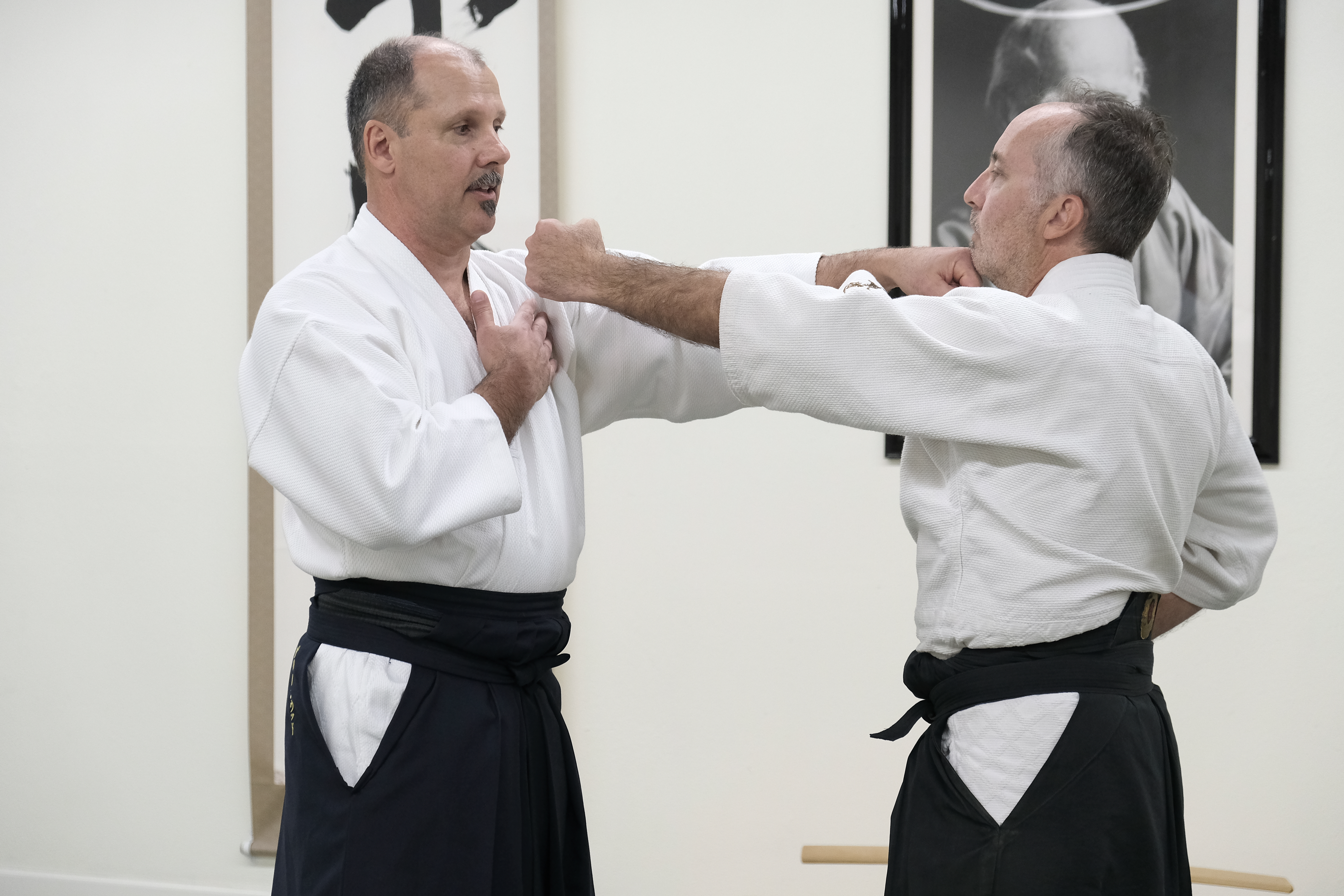
Right, and that’s hard to do. The geometry is very subtle.
Most people move too much — I’ll give you that clue. The concept behind irimi is actually a half-step. Nishio Sensei said he got this from O-Sensei, who told him while watching a particular fight that the reason the guy lost is that he moved a whole step.
Then O-Sensei explained to Nishio Sensei that when you move a whole step, you create a disconnect between you and the other person. Being connected doesn’t mean like physically wrapped up with them, but rather the way you maintain connected control in the situation is by only taking half steps. All the footwork is divided into half a step. You only advance by half steps.
It’s fascinating. I can imagine it takes a lot of work and a lot of practice to really embed that into your movement.
It does. The irimi step is based upon your body, not the opponent’s body, meaning that whether you’re up against a big person or small person, your movement is pretty much the same. In fact, when I say most people step too much — if you step too far, you actually are in a place where you can get hit.
Interesting.
This concept is based upon your particular body size, how you move. All the movement in combat is really happening around you, which is another really important concept, too. I’ll explain by talking about sword technique.
When I’m handling a sword, I really get the sense that all of these arcs of movement are happening around my own physical centers and I’m not pushing at the opponent. I’m not trying to press them. That’s a basic principle of Nishio Sensei’s aikido: you don’t push people. You actually always draw the person out and you allow their strike or their attack to complete itself. You don’t block.
Anytime he saw aiki sword practice happening and there was a lot of banging of swords going on, Nishio Sensei really took exception to that kind of practice. He says you shouldn’t collide with the other person.
Let’s talk a little bit more about sword training since that was a big part of Nishio Sensei’s own background.
Sure, yeah. The sword in Nishio Sensei’s model of aikido as a budo is one of three pillars. The first pillar is something we already talked about: the concept of irimi. The second one is atemi, meaning the ability to strike. Let me just add there that atemi doesn’t actually result in hitting a person; here, atemi actually is a way of defining space and the rhythm of the technique. We ultimately don’t actually use atemi to execute a physical strike on the opponent.
The third pillar is what Nishio Sensei called misogi no ken, or “the purifying sword,” which is different from a killing sword. Nishio Sensei said that O-Sensei taught that the sword in aikido is not for cutting but for purification. It’s sort of a way of removing the impurity of both opponents.
It’s so important to understand the sword but, unfortunately, it’s been sort of marginalized in a lot of aikido practice. Nishio Sensei even went so far to say, “I don’t think it’s even possible to understand aikido without some understanding of the swordsmanship.”
We have this art within Nishio Sensei’s tradition called aiki toho iai. The way that we study this now is based upon three levels of using the sword. The basic level is to use the sword to cut. When you’re first beginning, at maybe the first and second dan levels of practice, you use the sword in the way that any iaido practitioner would. You do the forms and you cut all the way through.
The next two levels have really been elucidated by my current teacher Koji Yoshida Sensei. In the second level, you use the sword but you enter to the opponent’s side and control them, joining with them. In the third level, you draw the sword and you move through the entire technique without ever cutting the opponent. You create a common space. In effect what you do is you cut the way for the technique. There is no clashing of weapons. You cut a path in front of the opponent where the technique goes but you never actually use the sword against the other person. Nishio Sensei felt it was a crime to cut or to injure another person.
That’s fascinating. Certainly, when you watch his sword work, it’s very distinctive. It looks quite different than most aiki sword work.
Some years ago, I found a review of Nishio Sensei’s aiki toho videos. These were real iaido professionals who wrote the review. They said something like, “Most of the time when we look at aiki sword work, it looks like the person’s never trained in the correct use of sword before, but Nishio Sensei was really correct in his handling of the sword. This can’t be aikido!” In the beginning, you learn how to handle the sword the proper way. It’s not just some sort of made-up thing. It derives from the correct use of the Japanese katana. When we remove the sword from our hands we still retain the feeling that we’re holding an invisible sword. Our empty hand techniques and movements become entirely informed by the sword.
Do you have any closing comments you’d like to share with us?
Today, both inside and outside of aikido, many people have questioned various aspects of the art. Nishio Sensei felt that some of those objections are justified. Some people contend that we should focus on developing special power, that this is the defining characteristic of aikido. Others suggest that aikido will only be respected if we train in a more combative way. Still others doubt the value of aikido unless it can be adapted to fit in with sport fighting.
Nishio Sensei stressed that aikido must maintain a core of martial effectiveness without brutality. In aikido you should never apply a technique or throw to injure or in such a way that you cannot ensure the safety of your opponent. He also taught a way of developing remarkable power and ease of movement which arises from the study of the sword. But these alone don’t define aikido. Nishio Sensei held that the central goal of the art was not the defeat of an opponent, but the search for unity, for acceptance and mutual coexistence. It is our goal in aikido to dissolve the entire notion of winning and losing, to maintain both our own humanity and the humanity of our opponent. At a time when violence is being increasingly normalized in both the public and private sector aikido must resist being bullied or intimidated into becoming something that it is not. Aikido must always remain an expression of civility, compassion and of the search for the common good.

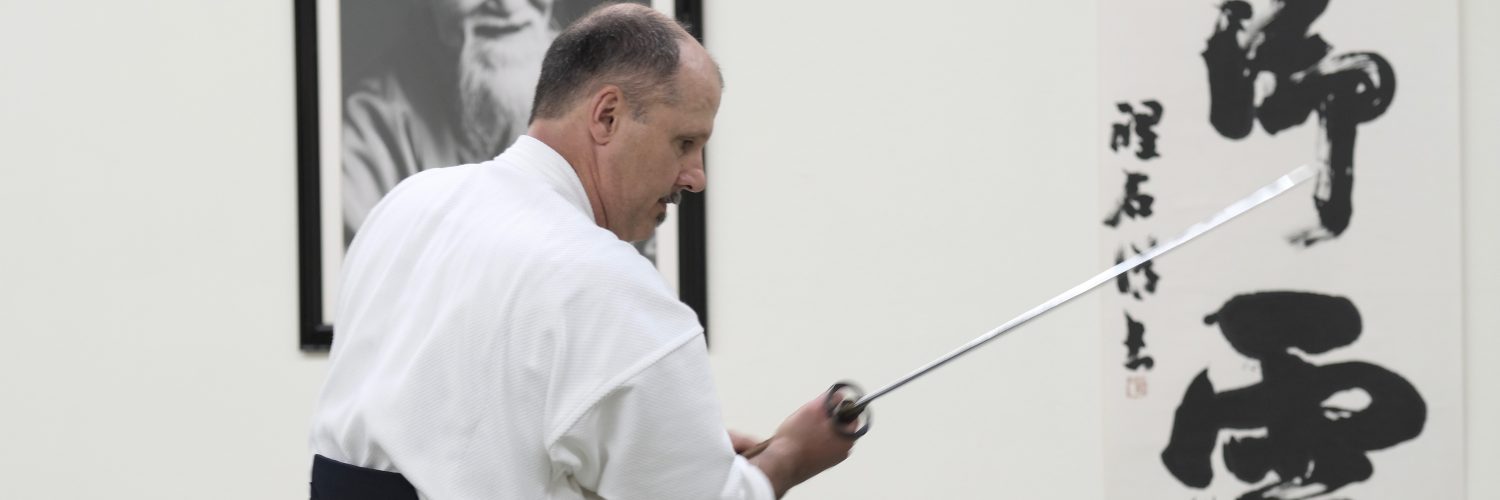

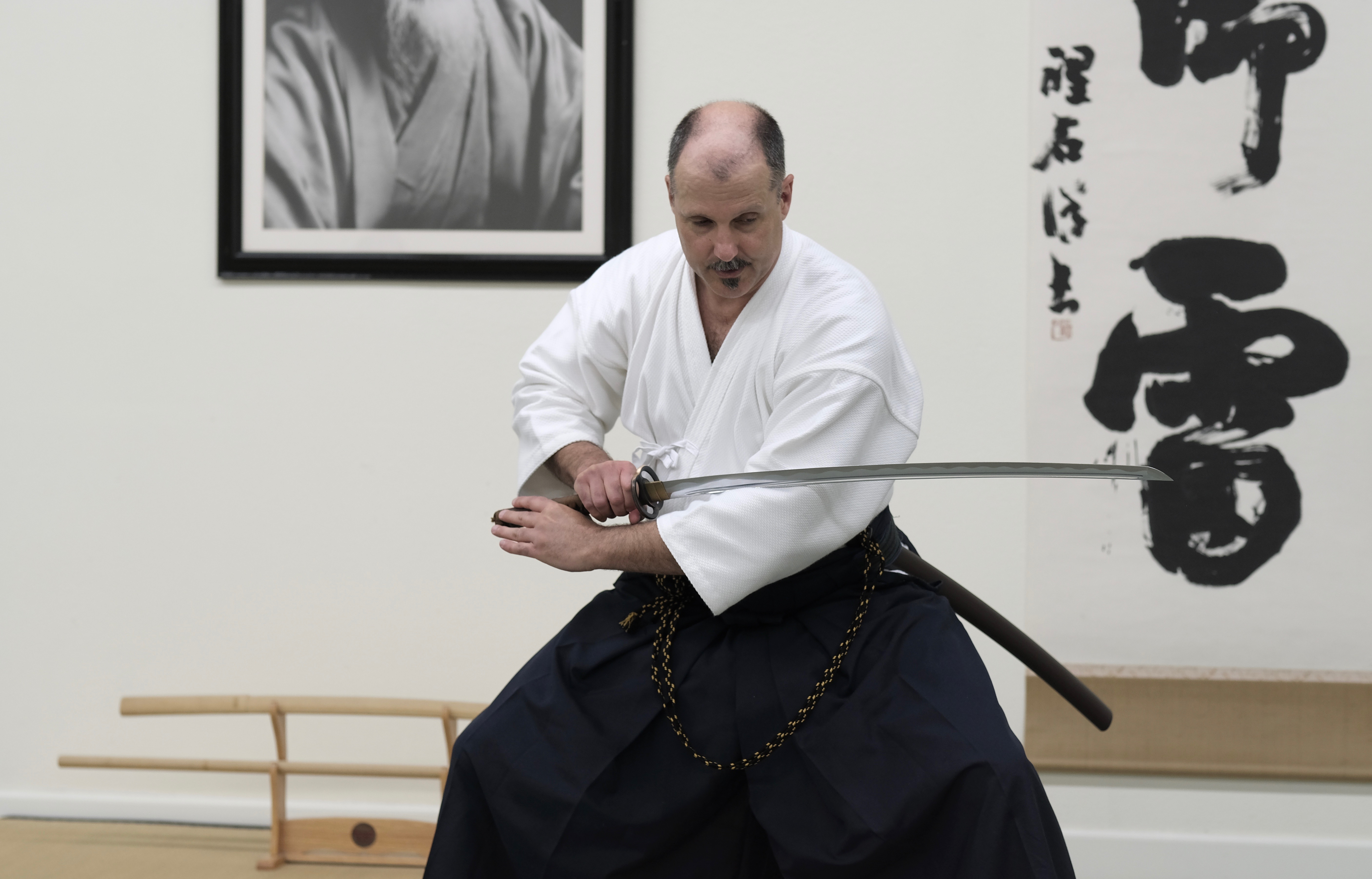










Excellent article! Thank you for writing this one.
You are most welcome!
Thanks Josh! Great article!
I like the concept of natural stance. I think the way Greenwood Sensei incorporated atemi in the waza demo was very good. I also enjoyed his thoughts on stepping offline (30 degrees) in order to cause kuzushi and remove the attackers ability to strike.
Thanks for a good article 🙂
An awesome interview full of great insights. The video is revealing. Nishio Aikido is an effective martial art. I can’t express how impressive it is that Ueshiba O’Sensei’s teachings are so consistently expressed by his students and his student’s lineage across the decades. I’m a Jiujitsu practitioner and I’m appreciative of Aikido and Aikido Journal. Keep up the great work.
I’m on the east coast and there are no Nishio Aikido dojo’s near me, but if there was one I’d do my best to find my way there eventually.
Osu.